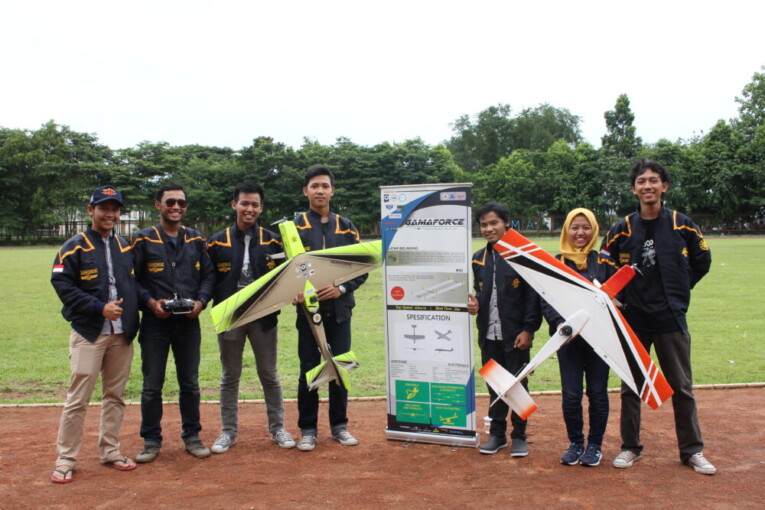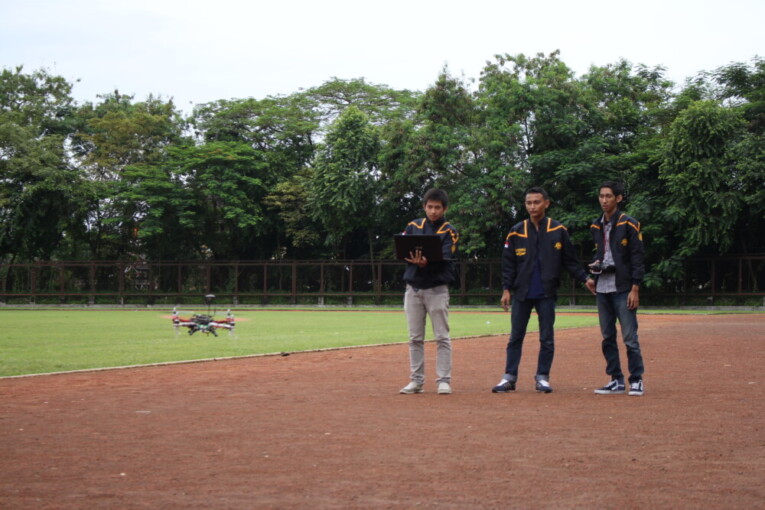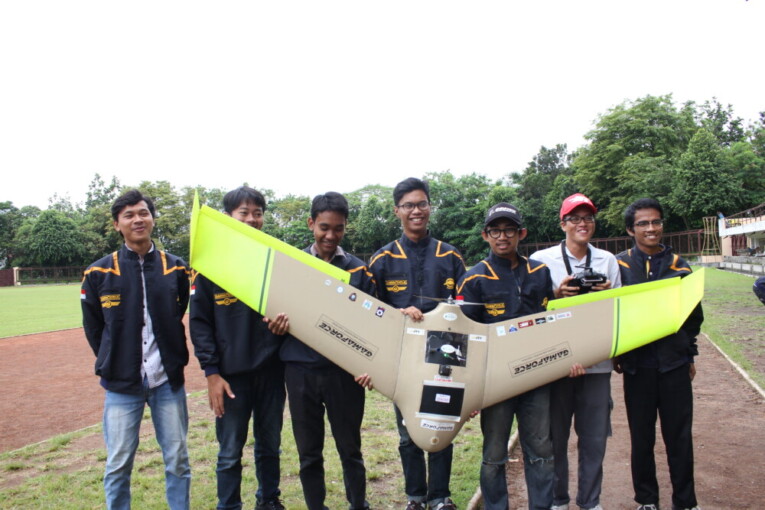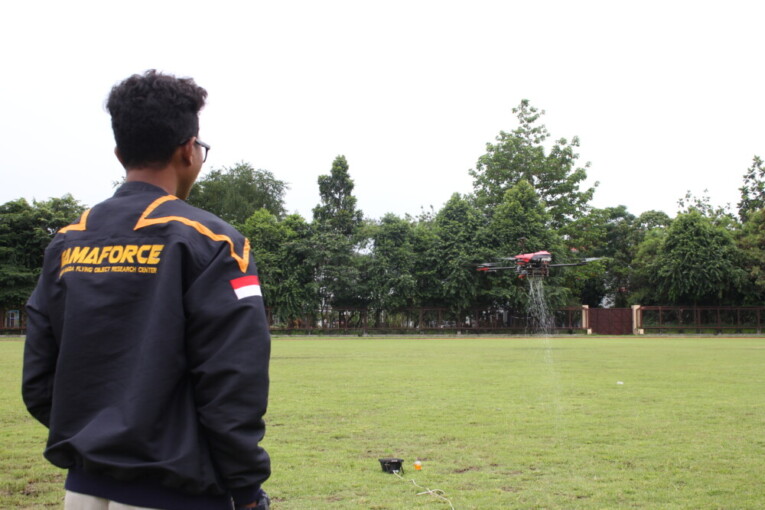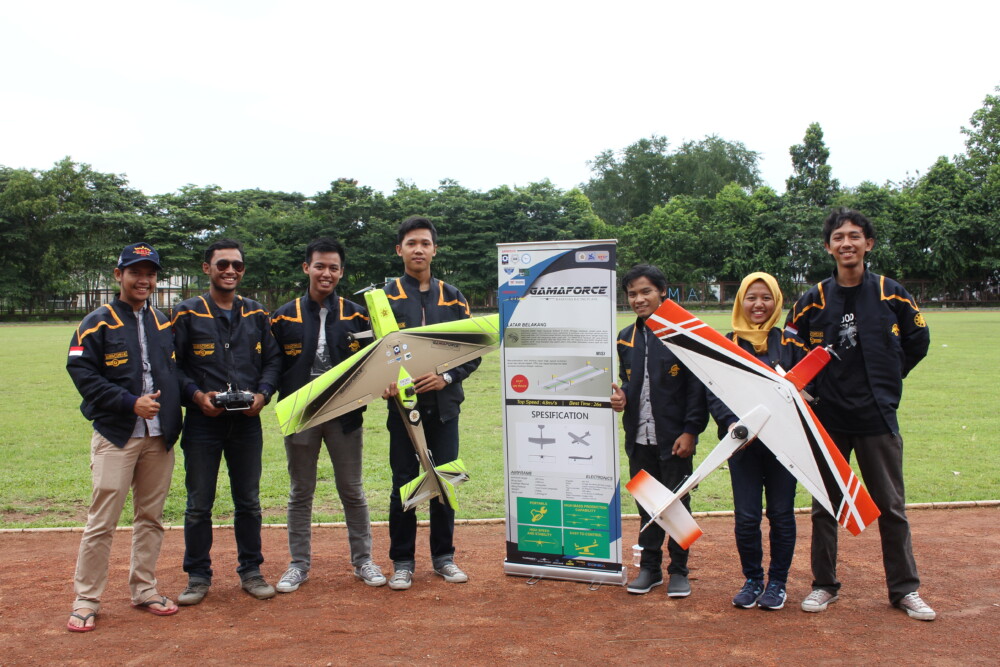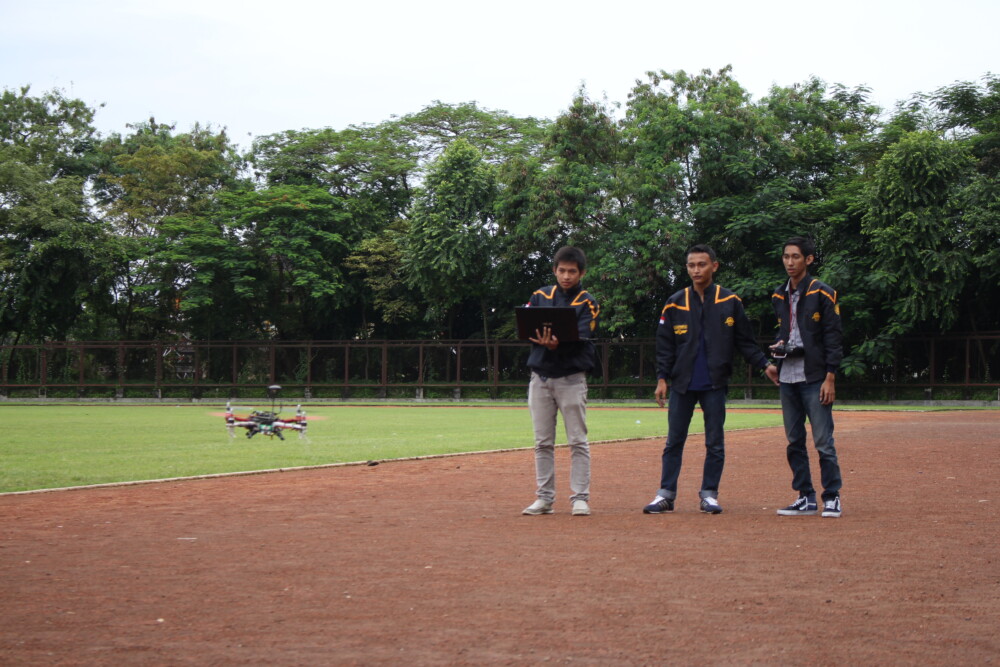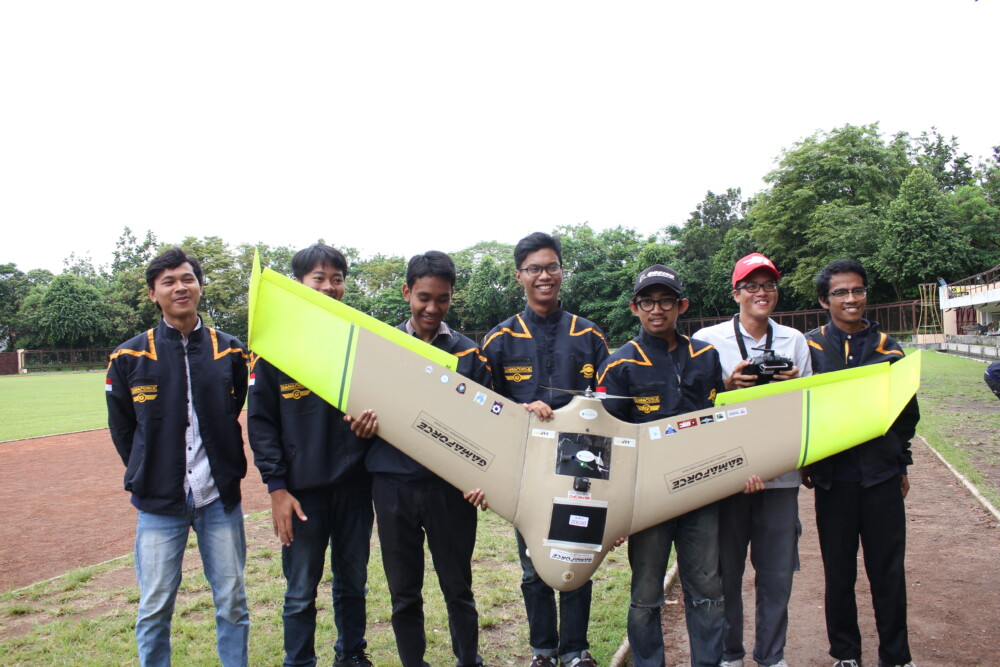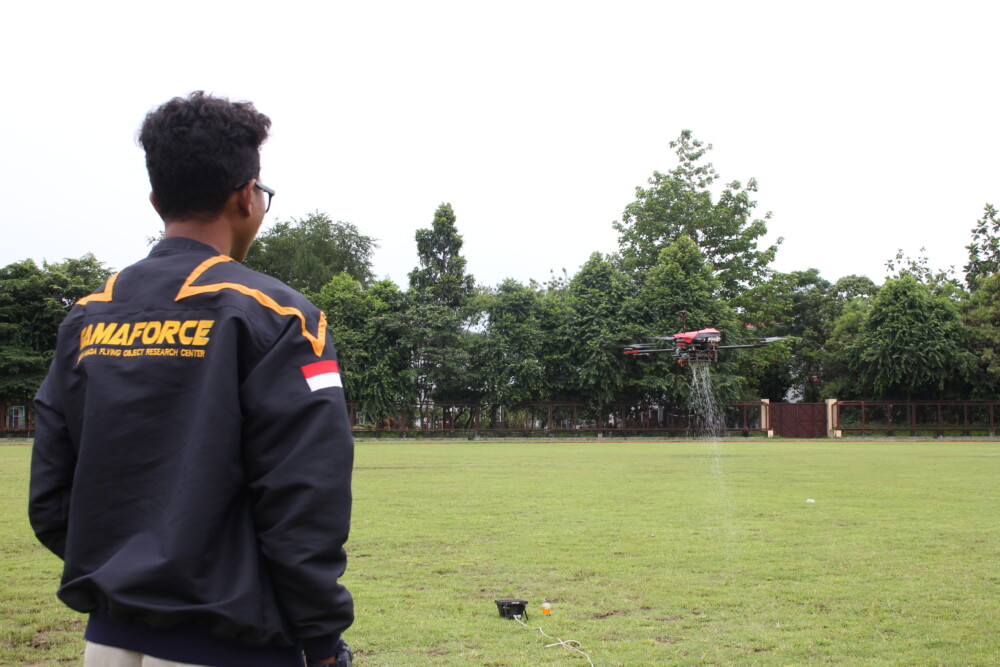A group of students of Universitas Gadjah Mada (UGM) joining Gadjah Mada Flying Riset Center (Gamaforce) UGM team has been the champion in the Indonesian Flying Robot Contest (KRTI) 2016 that was held at Universitas Lampung from 23-26 November.
Gamaforce dispatched four robots: Fiachra Aeromapper, Rasayana Racing Plane, Gadjah Mada Fighting Capter, and Aksa Biantara, of which three have excelled in three different categories. The Fiachra Aeromapper UGM robot won the fixed wing category and earned a special award for best system, the Rasyana was the runner-up in the racing plane category whilst the Aksa Biantara won the technology development.
Chairman of Gamaforce team, M. Aldika Biyanto, said on Friday (9/12) in a press conference alongside the UAV demo at Pancasila square UGM, that the Fiachra Aeromapper robot was a fixed wing UAV for regional monitoring and mapping by “auto flying to take photos and video streaming,” said Aldika.
Weighing 4 kg with fiber composite material makes the UAV stronger. “The UAV uses 6.200mAh batteries that can fly for 30 minutes,” Lazuardi Ichsan, other team member, added.
Lazuardi said this monitoring UAV is a launcher. It is stable with high durability whilst flying as well as small wing loading.
The Rasayana Racing Plane is a UAV to finish a fast, safe, and accurate flying mission in the mission track. It weighs 1.5 kg at a length of 1.1 meter and wing 1.2 meter. The body of the UAV is of composite material while the wing of foam core composite.
“Equipped with Li-Po Bonka 4s 1.200 mAh batteries, it can fly up to 20 minutes,” said developer, Umar Fadhil Ramadhan.
During the KRTI 2016 contest, this UAV was able to finish the mission to fly as far as 700 meter in 26.16 seconds.
The Aksa Biantara is a quadcopter UAV using independent technologies, such as flight controller, auto antenna tracker, and ground control station.
The flight controller can do autonomous modes, including auto take-off, auto landing, waypoint autonomous, and position hold. Auto trackler can maximise the antenna performance to fulfil the mission. The ground control station is designed to develop operator control interface independently.
“We have also developed features that include map, live streaming video, auto antena tracker system, and data sensors,” said Fransiskus Anindita Kristiawan PGS, developer of Aksa Biantara.
The Gama Force team has 52 members under the guidance of Gesang Nugroho, S.T., M.T., Ph.D. It has so far desgined up to 18 UAVs. Gesang hoped the team would make more UAVs to be used by the society. Hopfully, the UAVs can help do aerial mapping, borders monitoring, maritime and disaster purposes.


